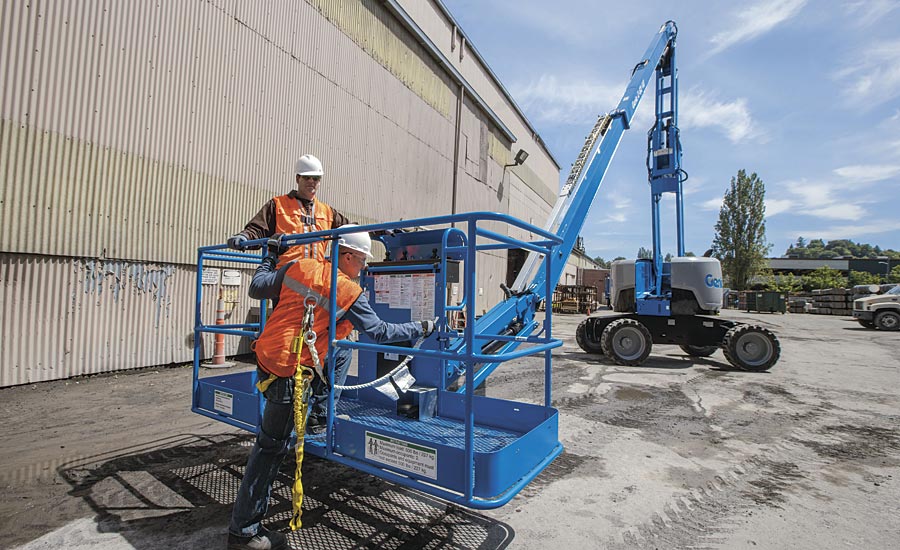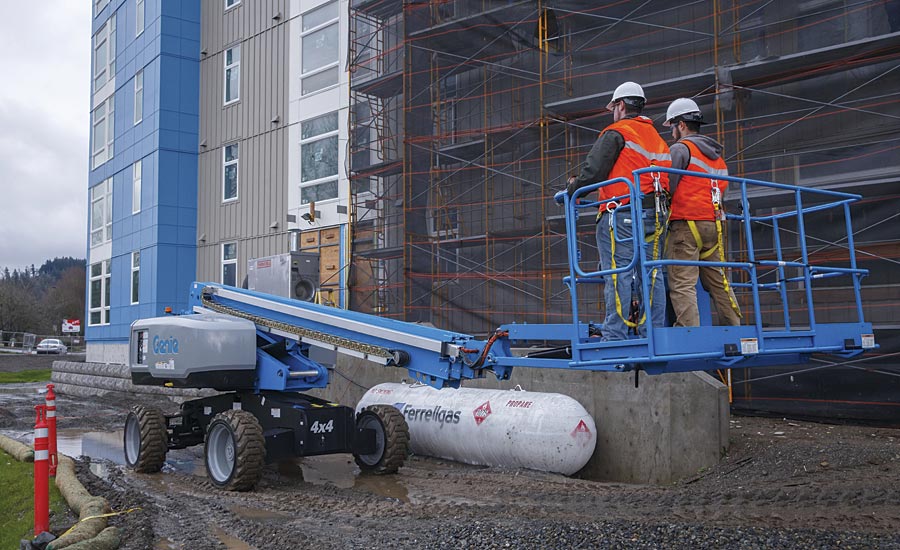10 Safety Tips For Operating Aerial Work Platforms
Tips every operator should know to stay safe on a jobsite.

The number one priority for aerial equipment manufacturers is to provide safe, productive aerial work platforms for customers working on aerial worksites.

The number one priority for aerial equipment manufacturers is to provide safe, productive aerial work platforms for customers working on aerial worksites.

The number one priority for aerial equipment manufacturers is to provide safe, productive aerial work platforms for customers working on aerial worksites.

The number one priority for aerial equipment manufacturers is to provide safe, productive aerial work platforms for customers working on aerial worksites.

The number one priority for aerial equipment manufacturers is to provide safe, productive aerial work platforms for customers working on aerial worksites.





The number one priority for aerial equipment manufacturers is to provide safe, productive aerial work platforms for customers working on aerial worksites. Once the equipment is in the field, operators must follow the prescribed operating practices outlined in our manufacturer’s recommended guidelines to keep the equipment working safely and productively.
These are some of the best ways to prevent incidents from happening while operating an aerial work platform on a jobsite that all operators should know.
Ten Tips for Safe Work Practices on Aerial Work Platforms
1. Read.
Understand and obey all of your employer’s safety rules and worksite regulations, as well as any applicable local, governmental or provincial regulations that apply before operating the machine.
2. Perform pre-operation inspection and function tests on the equipment before each shift.
If the machine fails any of these tests, make sure it is immediately tagged and removed from service until it can be repaired by a qualified service technician.
3. Perform a workplace risk assessment prior to moving machines to the jobsite.
Look for drop-offs and holes, slopes, slippery or unstable surfaces, overhead obstacles, power lines and any other hazards that may exist, and develop a plan to avoid those hazards through all phases of machine operation.
4. Wear the proper fall protection.
A properly fitted full body harness and appropriate lanyard, or self-retracting lifeline, will reduce the potential for an operator being catapulted from the platform of a boom. The slightest jar at the base of the machine can equate into a sudden and powerful whiplash at the platform—if this happens, wearing the proper fall protection may reduce the chances of serious injury or even death.
5. Do not sit, stand or climb on the platform guardrails.
Operators should maintain a firm footing on the platform floor at all times. If an operator is required to reach an overhead work area that is too small for the platform guardrails to allow access to, the use of a manufacturer-approved device, specifically designed to provide additional access to confined spaces, is recommended.
6. Do not exit an elevated boom or scissor lift platform unless you have been properly trained to do so.
Maintain 100 percent tie-off at all times and are in possession of an approval letter from the manufacturer that provides the proper guidance.
7. Do not climb down from the platform when it is raised.
Whenever possible, keep a cell phone or two-way radio with you while you are in the platform and always have a rescue plan in place in the event that an aerial machine is not equipped with an auxiliary lowering system (or if that system malfunctions).
8. Keep the platform floor clear of debris.
Scrap materials, buckets, large tool boxes and other items can cause a serious tripping hazard—you should remove any item from the platform that is not absolutely necessary to do your work.
9. Lower the platform entry mid-rail or close the entry gate before operating an aerial work platform.
Never tape or prop the entry open, and never use an aerial machine if the gate does not properly latch.
10. Receive proper training (both general training and hands-on practical training) on, as well as become familiar with, the exact aerial work platform you will be operating.
This includes thoroughly reading the operator’s manual and safety signs on the machine, as well as understanding the function and location of all safety devices and controls before beginning operation.
Overall
Be sure to follow these simple, safe operating tips to keep your aerial work platform performing productively day in and day out, from one application to another.
Looking for a reprint of this article?
From high-res PDFs to custom plaques, order your copy today!





-(1).jpg?height=200&t=1731412138&width=200)




